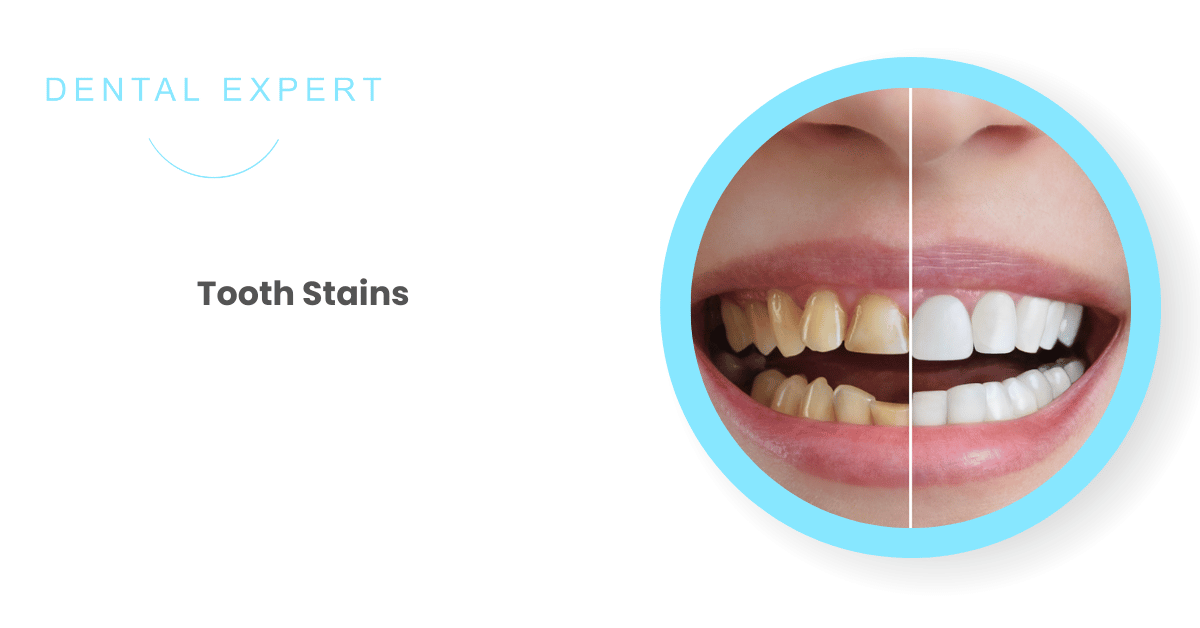Anyone can experience tooth discoloration, a prevalent dental issue. You might encounter this problem for a variety of reasons. Food and alcohol aren’t the only things that matter when it comes to this problem. Discoloration of the teeth can have several reasons, including but not limited to tobacco use, tooth decay, aging, and some medications.
If you want your teeth to look their best, avoiding any of these stains is a must. Superficial stains appear on the tooth’s surface, while deep enamel stains can be present in some people’s teeth. Tooth discolouration, its causes, and treatments are all discussed in detail on this blog.
WHAT CAUSES TEETH STAINING?
Many different things might lead to discoloration of the teeth. Some of the reasons we’ve discussed so far may have biological roots, such as the porous nature of dental enamel or the stain-causing potential of particular meals and drinks. There are many factors that can contribute to tooth stain and discoloration; some of these factors might have been in your control and others might not. Using this comprehensive list, you may find out what’s causing your teeth to discolor and, in many instances, stop more deterioration from happening.
Due to Negligence in Hygiene
Discolored teeth might be the result of neglectful oral hygiene practices, such as not brushing or flossing enough.
Due to Disease
Any issue that prevents the production of enamel, whether it be during oral development or pregnancy, can result in tooth discoloration in children. Discoloration of adult teeth can happen after trauma.
Due to Medicines
Antihistamines, chemotherapy, blood pressure medications, and even some antipsychotics can discolor teeth. Discoloration of the teeth can occasionally be a side effect of certain medical operations.
Dietary Habits
Some foods and beverages, including coffee, tea, dark beverages, red wine, and even certain vegetables, can stain teeth.
Cigarette smoke
Teeth discoloration can occur as a result of smoking or chewing tobacco.
Does tooth discoloration come in several forms?
There are a number of potential causes of tooth discoloration, including surface stains, structural alterations, or a mix of the two. The three most common types of tooth discoloration, according to dentists, are:
Intrinsic Stains
Stains that go all the way into the tooth’s pulp chamber are called intrinsic stains. It happens when stain-causing substances penetrate the tooth’s enamel and build up within the tooth. There is evidence that excessive fluoride consumption, particularly in youngsters, might cause neurotoxicity. It is still possible to remove teeth that are naturally discolored, but it is more difficult. Chemical teeth whitening treatments, either done professionally or at home with products like White Strips, may be necessary to remove deeply embedded discoloration.
Extrinsic Stains
Surface stains on teeth are called extrinsic stains. It happens when the protective protein layer of teeth gets accumulated with stains, like food or drink colorants. Cigarette smoking, heavy coffee and tea consumption, wine consumption, and cola drink consumption are the primary extrinsically discoloring factors in teeth. Whitening toothpaste and frequent dental cleanings are effective remedies for this kind of tooth discoloration.
Age Related Stains
Both internal and external factors can cause teeth to discolor with age. Darkening of the teeth is a natural consequence of aging dentin, the tooth’s structural component. The tooth’s enamel wears down with age, revealing more dentin. Most people’s teeth naturally discolor with age due to these intrinsic factors and extrinsic variables, including the effects of certain meals, alcohol, and smoking.
What Helps Remove Teeth Stains?
Start with Hygiene
If you’re dealing with this aesthetic problem, the first thing you should do is focus on improving your oral hygiene. To begin, cut back on teeth-staining drinks including soda, red wine, coffee, and tea. Use a straw to sip these drinks so the liquid doesn’t get between your teeth. The general consensus among dentists is that tobacco use, both chewing and smoking, is the primary cause of this cosmetic problem.
Also Read: 5 Impressive Health Benefits of Straight Teeth
Improve Dietary Habits
In order to prevent the growth of mutant Streptococcus bacteria in your mouth, it is recommended that you reduce your sugar intake. Problems such as plaque and gingivitis are to blame. The moment you consume sugary or carbonated beverages, you should immediately begin to wash your teeth.
Get Professional Help
Professional whitening, done in-office with specialized whitening instruments and techniques, can hasten the whitening process. Your dentist will use a hydrogen peroxide solution to treat the area. It may be necessary to use heat and specialized light to speed up the bleaching process for some items. In contrast, professional-only options will likely include a desensitizer, a higher concentration of whitener, and a dedicated tray for optimal adherence. In the hands of a trained dentist, the operation poses little risk.
Conclusion
These days, everyone wants their smile to be bright and healthy. You should talk to your dentist about the specific types of stains on your teeth before using any over-the-counter or do-it-yourself at-home whitening treatments. Being able to whiten your teeth in a safe way will allow you to grin widely for many years to come. Schedule a consultation today with Dental Expert Clinic, the best dental clinic in Mumbai, for your teeth whitening appointment.

